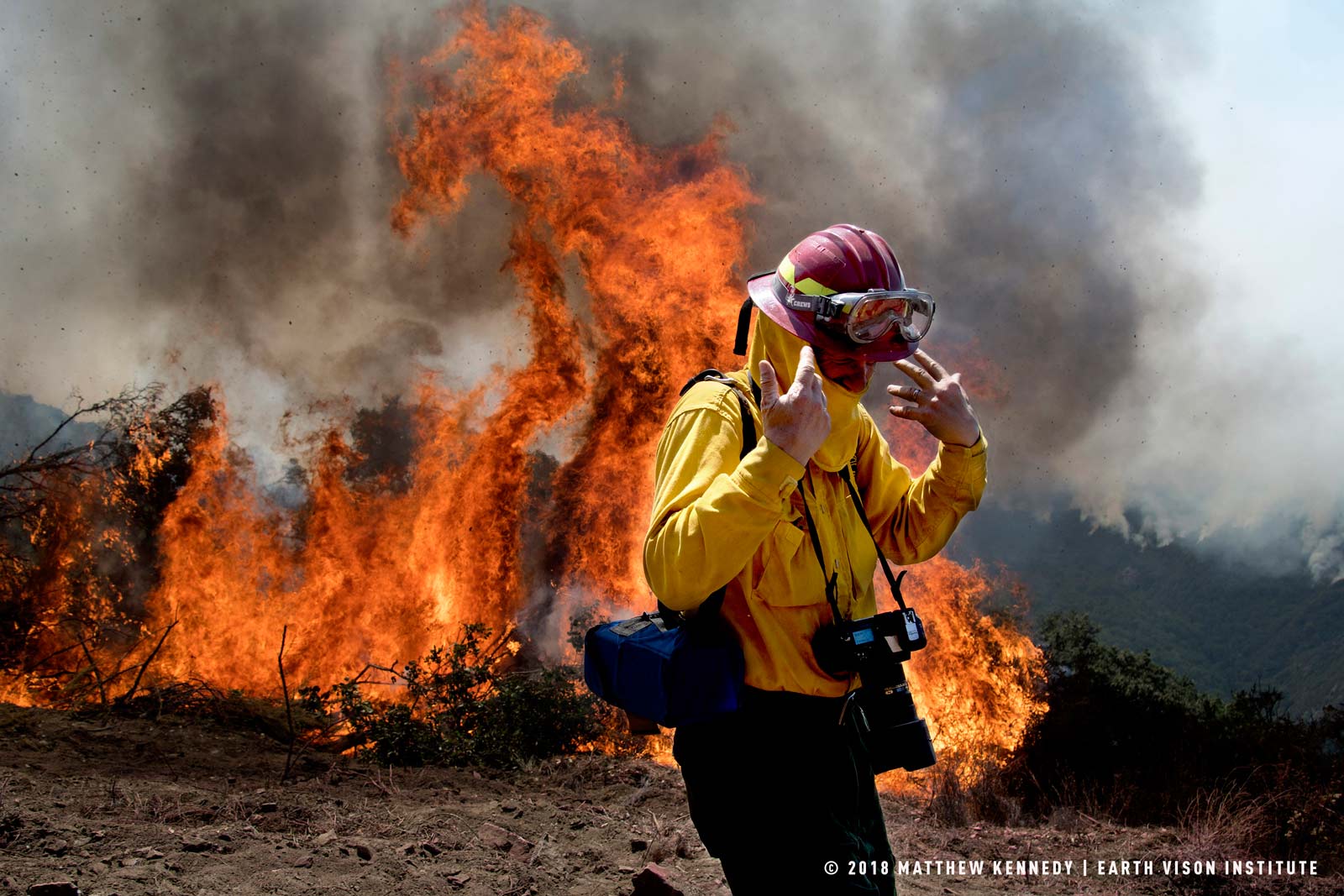James Balog is a renowned American photographer and scientist, whose work explores the relationship between humans and nature. In the film «The Human Element» he documents how the traditional four elements and the human being as a fifth element are changing each other. Through the combination of art and science, he shows the dramatic consequences of climate change in the everyday lives of people.

Photographer James Balog shoots in Ilulissat Bay, Greenland, March 2008.
(Das Interview gibt es auch auf Deutsch)
Films for the Earth: What was the main reason for your interest in capturing the effects of climate change in film and photography?
James Balog: I believe that the immediacy of the photographic evidence can break down barriers of mental resistance in a way that nothing else can. The photographic act is an act of love, forcing the image-maker to stop, look, and look again, to feel whatever it is he or she has seen, and perhaps even to assimilate some aspect of the scene into the core of his or her being. It is a way of saying: Wait, let’s pay attention—I saw this thing, this moment, had this experience, and it was important to me and it just might be important to you, the viewer, if you were to see it, too.
How do you bring art and science together to create such strong messages?
With my work, we’re actually building art on a platform of science, and through that we’re able to access both sides of the human brain, left brain/right brain, rational and intuitive, in a way that one approach or the other doesn’t reach. The truth of a lot of scientific information is that it’s incredibly powerful, it’s incredibly important, and there’s a huge amount of knowledge that’s embedded in that community. And they don’t have the channels for communicating it effectively to the public, outside of numbers in a newspaper article or magazine article. And the community has been extremely excited to have a whole different way of telling the story beyond the numbers and the graphs. And it’s been really heart-warming to me to see the enthusiasm.

Which experience impressed you the most during your work on “The Human Element”?
Photographing the wildfires and the return to the ancestral coal mining village were both very powerful experiences. The wildfires are extraordinarily intimidating natural forces. I have profound respect for the firefighters, for the courage and tenacity and skill of the people who work in that environment. Also, the fires deeply impressed me with how they integrate the story of air, weather, climate, plant life and human life.
As for my experience with the coal segment and as I say in the film, I discovered the nobility of the imagination and courage that those hard-working people who worked the mines vested in their survival. It greatly deepened my pride in my ancestors. At the same time, the experience of returning to that village sharpened my realization of how vital it is for our current civilization—and its industrialist and financier workers—to move beyond the patterns of the past and into the opportunities for the future.
We see what is happening on our planet. Which topic is most urgent in your eyes to work on next?
The question of energy use and supply remains a critical ”front burner” issue. There is no single magic answer. We all must do what we can with the opportunities and tools we have in our own lives. But at the broad societal level, the most important thing is to recognize in the economies of the world that there is a cost to burning carbon. In practice, that means putting a tax on carbon—even though the word “tax” is an anathema to many. The revenue to be raised by a carbon can we put into solving a host of engineering, energy generation, infrastructure and human problems.
“The Human Element” is very personal and intimate. What happens to you, when you let difficult human lives get so close to you?
Meeting these people and learning about their circumstances gave me a profound deepening of my compassion for and interest in my fellow human beings. We are all in this same boat, in the same turbulent waters, breathing the same compromised air supply, together.
What is supporting you to stay on the right path?
The most important supporting evidence is simply the voice of nature itself. We can see the impact on the world around us. That, along with the tremendous accumulation of scientific knowledge over the decades and centuries.
Film: How is climate change changing us? The documentary film “The Human Element” with the renowned photographer James Balog is celebrating its Swiss Premiere at the Films for the Earth Festival on the 21st of September! Further information on our festival page.




Hinterlasse eine Antwort